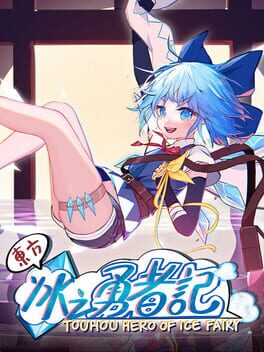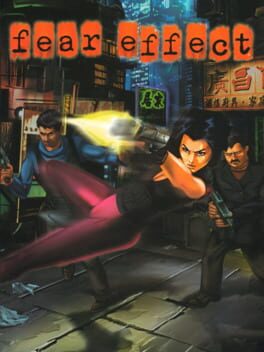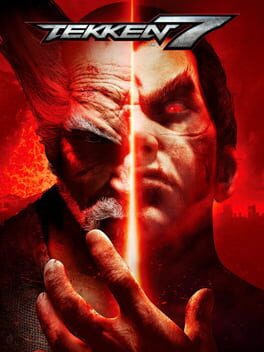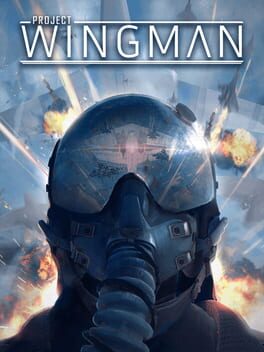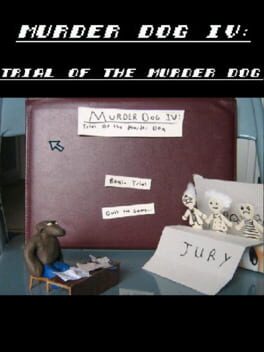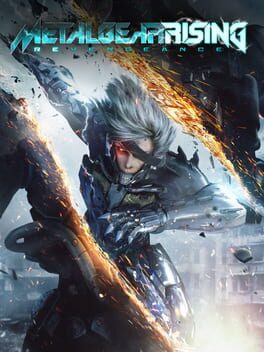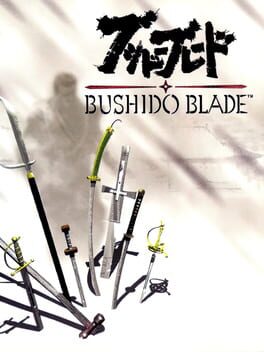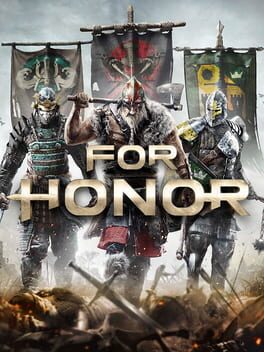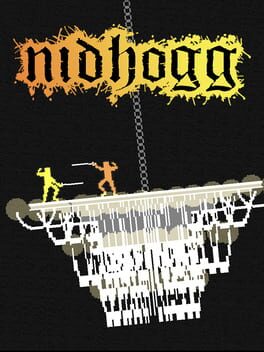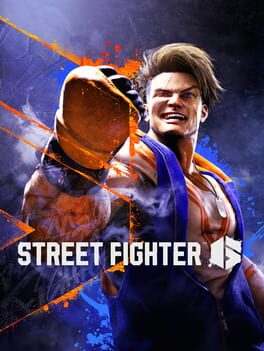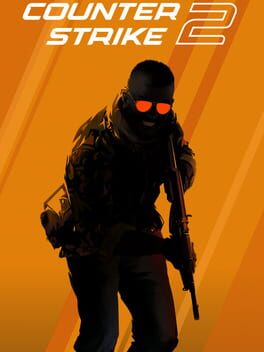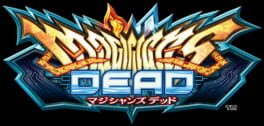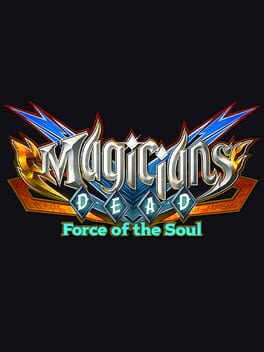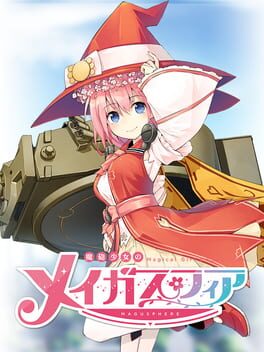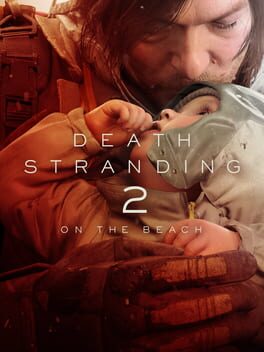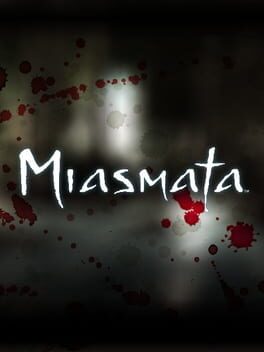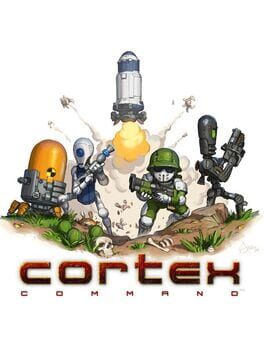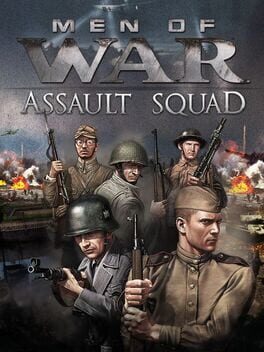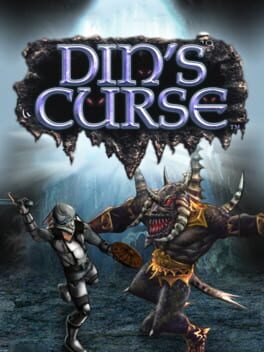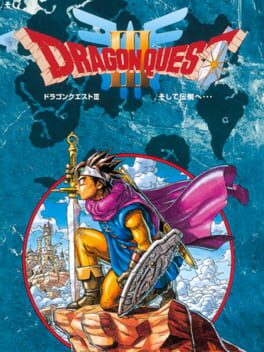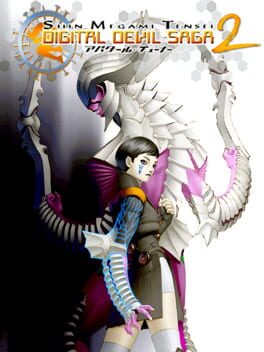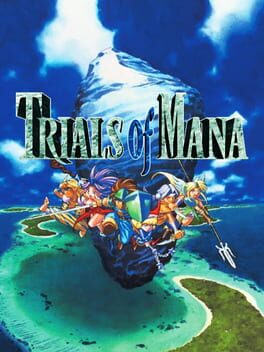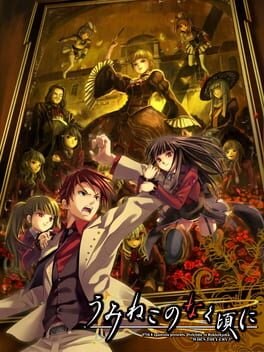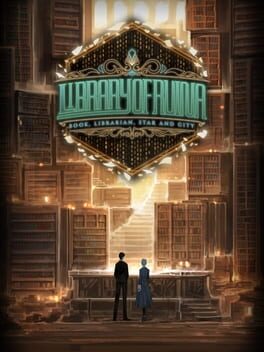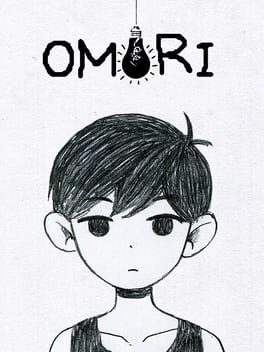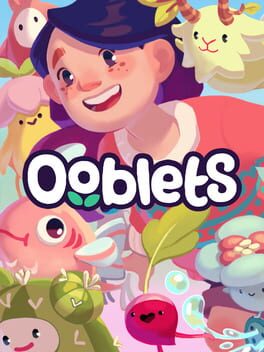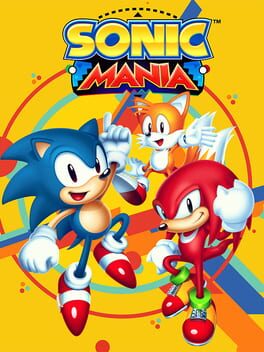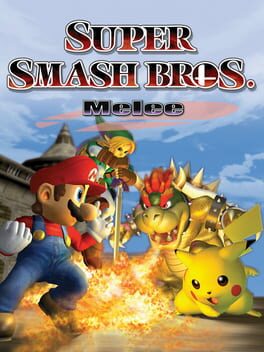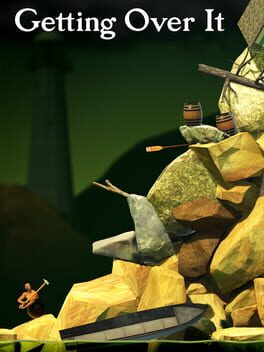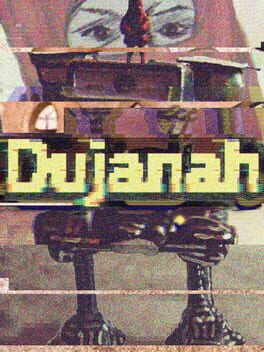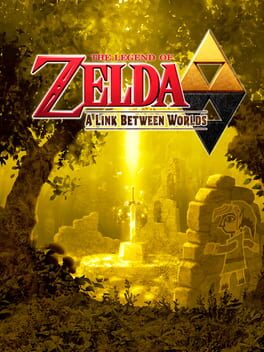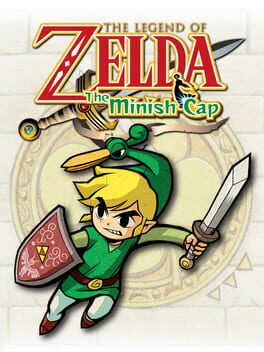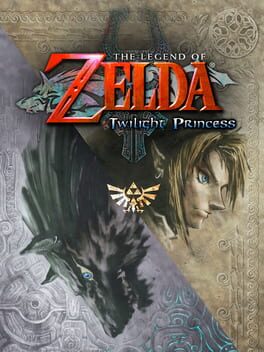LS197
1272 reviews liked by LS197
Mega Man Zero 2
2003
Sands off much of the rough edges of the first, but doesn’t innovate massively either, mostly ending up as a more comfortable trek through old ideas.
For instance, I didn’t mention the issues with screen crunch with the original, with lots of blind drops into instant-death spike traps, but it’s mostly remedied here with much of the stage design leaning into the hazards that will damage you and eat away at your overall rank- but not kill you. While getting bombarded by offscreen enemies is still a pain, overall the threats here a much better fit for the dimensions of the GBA screen and the tremendous mobility of your character. Gimmicks like timing your jumps to avoid geysers of frozen air or speeding across a minefield are relatively simple, but they are a huge step up from the first game, which seemed almost willfully designed not to account for any of these limitations.
The idea of tying your score at the end of levels to gaining new moves is a cool one too, and while its another system that the series would toy around with further (in this iteration it’s an all-or-nothing: you have to come into a level with an “A” rank or above to unlock a new move) it’s a powerful incentive to replay and really learn levels. With so many scoring systems, there’s a fundamental question of “why even engage with it,” and this gives clear answer to that: because you’ll miss out on the full range of your kit if you decide not to (and also because you’ll get called mean names like [SLUGGISH EDGE])
That said, for the mechanical improvements it does make, 2 is way too familiar in its scenarios- retreading through much of the first game only without the same curveballs in its mission design, and further compounded by the fact that it’s hitting all the notes of a regular Megaman title. Realizing that the back half of the game was going to be spent fighting the Guardians from 1, and then going into the formality of its boss rushes and final gauntlet made the game feel deeply inessential- like a Black Label version of the first. (This all might be due to the fact that the first Zero was meant to be a self-contained game, while 2 and 3 were developed together, the sophomore effort seemingly saddled with the baggage of vindicating its own existence in the wake of the first and laying the foundation for more interesting titles ahead.)
The best moment here is probably its midpoint, with a pair of missions where you’ll first run through the wreckage of the failed assault on Neo Arcadia, a pretty easy but very atmospheric section that calls to mind some of the best upsets of 1, and then racing your way through an airborne armada to defuse a bomb before it hits the resistance base, rapidly working your way through a succession of boss fights and some of the better platforming sections. This sequence doesn't just work because of the strong execution, but because it feels like the game is finally throwing off its comfortable template for a moment and really committing to a standout set of levels that are totally their own.
Otherwise, it’s a decent obstacle course, but not an essential one.
///
References:
"When we first created Mega Man Zero, we were not planning to make sequels," says Aizu. "After Zero's release, the sales were strong enough that Capcom wanted us to create the sequel. When we began planning the sequel, we decided to make two games. So as we began developing Mega Man Zero 2, we also had the story for Mega Man Zero 3 in mind for the series." - From "Companions Through Life and Death: The Story of Inti Creates and Mega Man," Jeremy Parish, writing for USGamer
For instance, I didn’t mention the issues with screen crunch with the original, with lots of blind drops into instant-death spike traps, but it’s mostly remedied here with much of the stage design leaning into the hazards that will damage you and eat away at your overall rank- but not kill you. While getting bombarded by offscreen enemies is still a pain, overall the threats here a much better fit for the dimensions of the GBA screen and the tremendous mobility of your character. Gimmicks like timing your jumps to avoid geysers of frozen air or speeding across a minefield are relatively simple, but they are a huge step up from the first game, which seemed almost willfully designed not to account for any of these limitations.
The idea of tying your score at the end of levels to gaining new moves is a cool one too, and while its another system that the series would toy around with further (in this iteration it’s an all-or-nothing: you have to come into a level with an “A” rank or above to unlock a new move) it’s a powerful incentive to replay and really learn levels. With so many scoring systems, there’s a fundamental question of “why even engage with it,” and this gives clear answer to that: because you’ll miss out on the full range of your kit if you decide not to (and also because you’ll get called mean names like [SLUGGISH EDGE])
That said, for the mechanical improvements it does make, 2 is way too familiar in its scenarios- retreading through much of the first game only without the same curveballs in its mission design, and further compounded by the fact that it’s hitting all the notes of a regular Megaman title. Realizing that the back half of the game was going to be spent fighting the Guardians from 1, and then going into the formality of its boss rushes and final gauntlet made the game feel deeply inessential- like a Black Label version of the first. (This all might be due to the fact that the first Zero was meant to be a self-contained game, while 2 and 3 were developed together, the sophomore effort seemingly saddled with the baggage of vindicating its own existence in the wake of the first and laying the foundation for more interesting titles ahead.)
The best moment here is probably its midpoint, with a pair of missions where you’ll first run through the wreckage of the failed assault on Neo Arcadia, a pretty easy but very atmospheric section that calls to mind some of the best upsets of 1, and then racing your way through an airborne armada to defuse a bomb before it hits the resistance base, rapidly working your way through a succession of boss fights and some of the better platforming sections. This sequence doesn't just work because of the strong execution, but because it feels like the game is finally throwing off its comfortable template for a moment and really committing to a standout set of levels that are totally their own.
Otherwise, it’s a decent obstacle course, but not an essential one.
///
References:
"When we first created Mega Man Zero, we were not planning to make sequels," says Aizu. "After Zero's release, the sales were strong enough that Capcom wanted us to create the sequel. When we began planning the sequel, we decided to make two games. So as we began developing Mega Man Zero 2, we also had the story for Mega Man Zero 3 in mind for the series." - From "Companions Through Life and Death: The Story of Inti Creates and Mega Man," Jeremy Parish, writing for USGamer
Class of '09
2021
Fear Effect
2000
I want to be clear that I’ve already lied to you by the time you’ve read this, because this game isn’t worthy of four stars. However, it is one of the most interesting and unusual games I’ve played in a long time, so I wanted to get the word out. If janky, mediocre PS1 games which fly off the rails are your thing, then go play it. Otherwise, I’ll just talk about its weirdness, spoiling things as I go.
So, the plot starts off in a Ghost-in-the-Shell cyber future, with your three protagonists entering the stage via the obligatory cyber helicopter. The first one you control is Hana, a slick super-spy who fits the mold of her time, essentially being Lara Croft by way of Motoko Kusanagi. Then, you have Glas, whose five o’ clock shadow and bright blue hoodie signify that he’s a hard-boiled detective undercover as a fifth grader. Finally, you have Deke, a potentially fake Australian who says “bloody” and “sheila” while wearing an unflattering turtleneck. The mission of this little mercenary band is to sneak into a yakuza hideout, and get information from their inside-man about the leader’s missing daughter. Sneak in, get the info, go out and find the girl, turn her in for a massive reward, easy. But of course, the job goes bad, the informant dies, the boss discovers what the mercs are up to, and they’re on the run. Now they have to get the girl as a bargaining chip for their own lives, and the race is on.
Please change the disc.
This game’s backgrounds are all pre-rendered videos, and it’s extremely central to this game’s identity. I may complain about how you have to juggle four discs to play a five hour game and laugh at the low resolution, but I can’t help but love how this game looks. I mean, it looks rough, but it’s the sheer commitment I respect. They didn’t want a rectangle with a circle on top as their helicopter; they created a fully-detailed model to be used in a pre-rendered video alongside other real-time effects. They wanted vents fogging up a rooftop with steam, not flat concrete walls. MGS-style head wiggling for talking wasn't good enough, they wanted animated faces with expressions and mouth flaps. They wanted an interactive animated feature within the limitations of the PlayStation, and that ambition really impresses me. I’ve played a ton of games which call back to this era, but they never replicate that ambitious attitude. They never capture the feeling of pushing the system to its breaking point, or of solving technical challenges with creativity. I mean, analog flaws are cool and all, but it feels like throwback games often miss the point by celebrating limitations for their own sake rather than for the creativity they engendered.
Please close the lid. Loading.
The second mission has you catching up to the missing girl, who’s in a town overrun by what seem to be zombies. She’s a little vague on the details, but she tells you that she “didn’t know that blood was the catalyst”. It’s a bit of a jump from the straight cyberpunk we started with, but sci-fi mixes with any genre pretty well, so it’s all good. She agrees to return to her father, as long as she gets to see a woman known as Madame Chen first, since she can explain things. But of course, Chen’s working with the yakuza, and the girl’s captured as soon as Glas brings her in the door. This third mission has you switching between characters in Madame Chen’s restaurant-slash-brothel: escaping capture as Glas, sneaking in as Hana, and kicking in the door as Deke.
This is an abrupt stop, but I’m about to drop a significant spoiler for the exact moment that shit flies off the rails. If this has piqued your interest at all, stop at the end of this sentence and go play it. This is the big reveal.
Ok, now change the disc again.
Glas and Deke are ambushed. They die, and their souls go to hell. The madame turns out to be a demon queen, and Hana kills her. Her blood melts a hole into the underworld. Hana descends the melted blood hell pit to go kill Satan.
That’s not an exaggeration. Not a joke. That’s what happens. You've spent the majority of the game as these two characters, and now they're bloody scraps. As hard of a tonal pivot as it is though, this is the exact moment where I totally fell in love with this clunky old game. With such an unsafe move, it achieved something that Resident Evil was never able to: the establishment of vulnerability when players are at their strongest. It’s a Predator-esque pivot where a lone action hero has to come to the realization they’re actually in a horror movie. You used to worry about normal soldiers shooting at you, and suddenly you’re facing demons with scythe hands. Maybe the zombies in the second chapter should have struck me more than they did, but I was expecting them to be explained away. I thought it would be revealed that the yakuza girl was genetically engineered to work with next-generation nanomachines or something, and that the nanobots in her blood were lethal to anyone else. I mean, the zombies in the games which inspired Fear Effect were the result of an engineered virus, and I don’t expect Jill Valentine to go kick Satan’s ass until RE10 at the earliest.
One last disc change.
That’s as far as I’ll spoil the plot, since I think it’s enough to convey why I have four-star love for this mediocre game. It’s just so wholeheartedly bold. Even to this day we get lazy rearrangements of Resident Evil and Silent Hill, but Fear Effect showed how to use the format while fearlessly establishing its own identity way back in 2000. It fought every technical limitation, ignored standard practices, and did its own thing. Being just as good as the other games out there wasn’t the goal at all, it had to blow people away. It probably shocked you at least once just in this summary, and I didn’t even include some of the cooler things it does towards the very end. So, I’m fine with it having a shit inventory system. I’m fine with a broken lock-on. I’m fine with all the flaws, because, as cheesy as it is to say, this game was never trying to be good, it was trying to be awesome.
So, the plot starts off in a Ghost-in-the-Shell cyber future, with your three protagonists entering the stage via the obligatory cyber helicopter. The first one you control is Hana, a slick super-spy who fits the mold of her time, essentially being Lara Croft by way of Motoko Kusanagi. Then, you have Glas, whose five o’ clock shadow and bright blue hoodie signify that he’s a hard-boiled detective undercover as a fifth grader. Finally, you have Deke, a potentially fake Australian who says “bloody” and “sheila” while wearing an unflattering turtleneck. The mission of this little mercenary band is to sneak into a yakuza hideout, and get information from their inside-man about the leader’s missing daughter. Sneak in, get the info, go out and find the girl, turn her in for a massive reward, easy. But of course, the job goes bad, the informant dies, the boss discovers what the mercs are up to, and they’re on the run. Now they have to get the girl as a bargaining chip for their own lives, and the race is on.
Please change the disc.
This game’s backgrounds are all pre-rendered videos, and it’s extremely central to this game’s identity. I may complain about how you have to juggle four discs to play a five hour game and laugh at the low resolution, but I can’t help but love how this game looks. I mean, it looks rough, but it’s the sheer commitment I respect. They didn’t want a rectangle with a circle on top as their helicopter; they created a fully-detailed model to be used in a pre-rendered video alongside other real-time effects. They wanted vents fogging up a rooftop with steam, not flat concrete walls. MGS-style head wiggling for talking wasn't good enough, they wanted animated faces with expressions and mouth flaps. They wanted an interactive animated feature within the limitations of the PlayStation, and that ambition really impresses me. I’ve played a ton of games which call back to this era, but they never replicate that ambitious attitude. They never capture the feeling of pushing the system to its breaking point, or of solving technical challenges with creativity. I mean, analog flaws are cool and all, but it feels like throwback games often miss the point by celebrating limitations for their own sake rather than for the creativity they engendered.
Please close the lid. Loading.
The second mission has you catching up to the missing girl, who’s in a town overrun by what seem to be zombies. She’s a little vague on the details, but she tells you that she “didn’t know that blood was the catalyst”. It’s a bit of a jump from the straight cyberpunk we started with, but sci-fi mixes with any genre pretty well, so it’s all good. She agrees to return to her father, as long as she gets to see a woman known as Madame Chen first, since she can explain things. But of course, Chen’s working with the yakuza, and the girl’s captured as soon as Glas brings her in the door. This third mission has you switching between characters in Madame Chen’s restaurant-slash-brothel: escaping capture as Glas, sneaking in as Hana, and kicking in the door as Deke.
This is an abrupt stop, but I’m about to drop a significant spoiler for the exact moment that shit flies off the rails. If this has piqued your interest at all, stop at the end of this sentence and go play it. This is the big reveal.
Ok, now change the disc again.
Glas and Deke are ambushed. They die, and their souls go to hell. The madame turns out to be a demon queen, and Hana kills her. Her blood melts a hole into the underworld. Hana descends the melted blood hell pit to go kill Satan.
That’s not an exaggeration. Not a joke. That’s what happens. You've spent the majority of the game as these two characters, and now they're bloody scraps. As hard of a tonal pivot as it is though, this is the exact moment where I totally fell in love with this clunky old game. With such an unsafe move, it achieved something that Resident Evil was never able to: the establishment of vulnerability when players are at their strongest. It’s a Predator-esque pivot where a lone action hero has to come to the realization they’re actually in a horror movie. You used to worry about normal soldiers shooting at you, and suddenly you’re facing demons with scythe hands. Maybe the zombies in the second chapter should have struck me more than they did, but I was expecting them to be explained away. I thought it would be revealed that the yakuza girl was genetically engineered to work with next-generation nanomachines or something, and that the nanobots in her blood were lethal to anyone else. I mean, the zombies in the games which inspired Fear Effect were the result of an engineered virus, and I don’t expect Jill Valentine to go kick Satan’s ass until RE10 at the earliest.
One last disc change.
That’s as far as I’ll spoil the plot, since I think it’s enough to convey why I have four-star love for this mediocre game. It’s just so wholeheartedly bold. Even to this day we get lazy rearrangements of Resident Evil and Silent Hill, but Fear Effect showed how to use the format while fearlessly establishing its own identity way back in 2000. It fought every technical limitation, ignored standard practices, and did its own thing. Being just as good as the other games out there wasn’t the goal at all, it had to blow people away. It probably shocked you at least once just in this summary, and I didn’t even include some of the cooler things it does towards the very end. So, I’m fine with it having a shit inventory system. I’m fine with a broken lock-on. I’m fine with all the flaws, because, as cheesy as it is to say, this game was never trying to be good, it was trying to be awesome.
Tekken 7
2015
Project Wingman
2020
Took me a little bit to settle into Project Wingman: Divided into two halves, the conquest and campaign feel like they contain the missing element of the other mode- conquest is a rougelike, with a constantly rising alert level and a stingy economy forcing you to consider if it’s worth it to fight tougher and tougher enemies for the sake of a better payout at the end of a mission, but the maps are massive and barrain. The campaign has a number of massive and well-produced battles, but it doesn’t have any kind of meaningful scoring system that could force you to rethink your approach to old levels: clear something once and you're done, a far cry from the nice balance of the two the Ace Combat titles are generally able to strike. While I don’t think it would’ve been as easy as merging the two sides into one to fix some of my broader problems with the game, it’s still striking to see the two appeals acknowledged, but not combined.
Gets a lot better with time though- was going to write a lot more about the flatness of the early levels in the Campaign, but the transformative quality of the unlockable “Mercenary” difficulty addressed a lot of my problems, serving as the best kind of New Game +. You keep your fleet of planes and fight through remixed enemy placements, doubly addressing the slow pace and bog-standard engagements that dragged out the action of the early levels. Think that Project Wingman is most in its element when it’s dialing up the scale of the battles, cutting through armies of fantasy weapons-platforms, the screen crammed with sky-carriers and super-tanks and an absurd number of fighters.
It’s surreal imagery and a great threat, your missile warning constantly blaring out, and traces of railgun fire making for a distinct threat, their presence further complicating your ability to break line-of-sight with enemies. This increased difficulty also addressed one of my other initial problems with the game, which is the lack of resource-management compared to Ace Combat. You’ll pretty quickly have access to a surplus of missiles and special weapons, and the only limits on flares are a 10-second cooldown. It ends up being pretty easy to play thoughtlessly against the standard enemy arrangements, but the scope and length of the fights in this new mode made me much more conscious of my loadout and ammo supply. I knew I was going to finish the Mercenary mode when I had to really start experimenting with weapons on the fourth mission, forced to optimize and consider how to best use the newly-finite resources against lethal super-tanks that require you to destroy all their weapon emplacements first. Trying the pick them apart normally ended up being too dangerous, and I ended up refining my loadout to successfully incorporate heavier bombs over a number of failed attempts.
Good changes overall, but still wish the mission structure was more varied- would never have guessed I’d pine for the filler sections of Ace Combat 4, but being tasked to “kill everything” gets understandably old after 20 missions with no break in sight. The few times where it does break from the norm, like one mission where civilian planes are interspersed with enemies and shooting them down will fail the objective highlight how slight the modifiers could’ve been to transform the action. It’s a seemingly minor consideration, but it means you can’t fire away with your surplus of multi lock-on missiles and have to factor these neutral planes into your angle-of-approach. A time limit on a mission, some radar jammers that would impact your mini-map, or a few objectives you needed to protect could’ve similarly gone a long way as pace-breakers.
On the mind because it affects the game narratively too: An early-game mission where Cascadian forces are retreating from a major city is never able to land with the weight the presentation clearly wants, this supposed tactical failure preceded by gameplay where you’ve just spent the last 15 minutes annihilating every enemy on the map. Same goes for a solo mission which is framed as a smaller op before a larger offensive, but sees you clearing an enemy force that’s as massive as any of the regular encounters, and doubly annoying when you don’t have your Wingmen to chip away at some of the scattered emplacements.
Don’t want to be too dour though: haven’t had a chance (or the means to play it) but the Frontline 59 expansion seems to address a lot of the pacing issues I had with the main campaign of Project Wingman, and the strongest moments here make some of the more repetitive missions here easier to overlook. “Cold War” is the obvious highlight, a massive, mission-long dogfight that highlights the tenacity of the enemy pilots AI, and caps off with a great rematch against Crimson 1, your main rival throughout the game. Also one of best examples of how the great the energy of the presentation can be when everything here is firing on all cylinders: lively radio chatter and an inspired setting really managing to sell what a turning point this is for the world (and not to mention what a stellar opening this is). Could even see the somewhat lax mission design being a strength long-term, only rarely having to spend time hitting your marks in a choreographed set piece.
Rarely want to hit someone with the “It gets good X hours in,” but that’s exactly what happened here- really comes into its own over the course of the campaign and ends up being a great challenger to the normally uncontested throne of arcade flight-action.
Gets a lot better with time though- was going to write a lot more about the flatness of the early levels in the Campaign, but the transformative quality of the unlockable “Mercenary” difficulty addressed a lot of my problems, serving as the best kind of New Game +. You keep your fleet of planes and fight through remixed enemy placements, doubly addressing the slow pace and bog-standard engagements that dragged out the action of the early levels. Think that Project Wingman is most in its element when it’s dialing up the scale of the battles, cutting through armies of fantasy weapons-platforms, the screen crammed with sky-carriers and super-tanks and an absurd number of fighters.
It’s surreal imagery and a great threat, your missile warning constantly blaring out, and traces of railgun fire making for a distinct threat, their presence further complicating your ability to break line-of-sight with enemies. This increased difficulty also addressed one of my other initial problems with the game, which is the lack of resource-management compared to Ace Combat. You’ll pretty quickly have access to a surplus of missiles and special weapons, and the only limits on flares are a 10-second cooldown. It ends up being pretty easy to play thoughtlessly against the standard enemy arrangements, but the scope and length of the fights in this new mode made me much more conscious of my loadout and ammo supply. I knew I was going to finish the Mercenary mode when I had to really start experimenting with weapons on the fourth mission, forced to optimize and consider how to best use the newly-finite resources against lethal super-tanks that require you to destroy all their weapon emplacements first. Trying the pick them apart normally ended up being too dangerous, and I ended up refining my loadout to successfully incorporate heavier bombs over a number of failed attempts.
Good changes overall, but still wish the mission structure was more varied- would never have guessed I’d pine for the filler sections of Ace Combat 4, but being tasked to “kill everything” gets understandably old after 20 missions with no break in sight. The few times where it does break from the norm, like one mission where civilian planes are interspersed with enemies and shooting them down will fail the objective highlight how slight the modifiers could’ve been to transform the action. It’s a seemingly minor consideration, but it means you can’t fire away with your surplus of multi lock-on missiles and have to factor these neutral planes into your angle-of-approach. A time limit on a mission, some radar jammers that would impact your mini-map, or a few objectives you needed to protect could’ve similarly gone a long way as pace-breakers.
On the mind because it affects the game narratively too: An early-game mission where Cascadian forces are retreating from a major city is never able to land with the weight the presentation clearly wants, this supposed tactical failure preceded by gameplay where you’ve just spent the last 15 minutes annihilating every enemy on the map. Same goes for a solo mission which is framed as a smaller op before a larger offensive, but sees you clearing an enemy force that’s as massive as any of the regular encounters, and doubly annoying when you don’t have your Wingmen to chip away at some of the scattered emplacements.
Don’t want to be too dour though: haven’t had a chance (or the means to play it) but the Frontline 59 expansion seems to address a lot of the pacing issues I had with the main campaign of Project Wingman, and the strongest moments here make some of the more repetitive missions here easier to overlook. “Cold War” is the obvious highlight, a massive, mission-long dogfight that highlights the tenacity of the enemy pilots AI, and caps off with a great rematch against Crimson 1, your main rival throughout the game. Also one of best examples of how the great the energy of the presentation can be when everything here is firing on all cylinders: lively radio chatter and an inspired setting really managing to sell what a turning point this is for the world (and not to mention what a stellar opening this is). Could even see the somewhat lax mission design being a strength long-term, only rarely having to spend time hitting your marks in a choreographed set piece.
Rarely want to hit someone with the “It gets good X hours in,” but that’s exactly what happened here- really comes into its own over the course of the campaign and ends up being a great challenger to the normally uncontested throne of arcade flight-action.
Tales of Arise
2021
A complete shallow mess of an action game with a myriad of conflicting design choices.
>enemy and boss interactions are neutered compared to previous entries (artes have less distinct features among them, the amount of hit states you can potentially inflict on an enemy has been lessened, with even shit like downing enemies locking them down to the ground, unable to be comboed, bosses will flat out ignore hitstun entirely, even humanoid ones)
>you only get a max of 12 artes (6 for ground and 6 for air) when most modernish games allowed for at least 16
>artes are now separated into two categories, ground and aerial, vastly limiting your combo potential and leading to more repetition
>if you want to keep an enemy in its break state, you’ll find yourself forced into doing aerial combos even if you probably won’t want to, making the aerial and ground play feel even more homogenized
>Boost Artes/Strikes all have a singular answer and don’t particularly open up for interesting combo routes and gameplay applications
In most action games (the big ones at least, not counting the shoveleware stuff) you can change the status of a normal enemy pretty easily. There are multiple types of hitstun, stun, aerial status, downed status, pinned on a wall etc. These go a long way in making combat against normal mooks enjoyable, since they open up a lot of possibilities. Hitting an enemy and having it suffer just damage and hitstun is the most basic interaction and it's fine, but if it's almost all you ever do, then it starts to become a problem.
Tales games usually do a pretty good job with this, giving you a ton of artes with unique properties (pushback, launchers, downing, picking enemies up from a downed state, spinning, dizzying, relocating player characters behind the enemies, inflicting varying amounts of hitstun, comboing into themselves for multiple hits, and more) that not only had useful functions when it came to engaging enemies but made it satisfying as a result due to the amount of different hit reactions you can inflict. In Arise, however, there’s just not as many outside of knockdown with Boost Attacks, in which you can’t even pick up enemies from since it locks them to the ground, launchers, and some status effects here and there, which makes the combat feel less dynamic as a result.
There's not really any room for real creativity or interesting situations arising from what you choose to do, there's a very limited number of possible game states in Arise with very limited answers. When an enemy actually is responding to being hit they only have a single type of standing hitstun since things like basic OTG mechanics are no longer present, and a stun/stagger state where all you can do is wail on them while they sit in place. Of course that's when they're not just plowing through attacks with super armor. There's no room for actual variety in combat since everything you do will lead to the exact same outcome. I can't consider swapping out animations to do the same thing to be actual depth or variety.
As for the conflicting design choices, Arise wants to have you doing fast, flashy combos (which are really brainless to perform since you'll never create an interesting situation that you have to adapt to and you'll never have to think about what artes will go well together. Even something as simple as accounting for your arte choices causing knockdown is out the window.) yet it's also unresponsive with unnecessarily lengthy animations that can't be canceled, and spams super armor on every enemy. Generally having most of your moves be long animation locks is for games with slow, methodical combat (e.g. Monster Hunter, Souls) but Arise tries to have its cake and eat it too, unable to decide between being a poor copy of stuff like DMC or a poor copy of stuff like MonHun.
Then you get to the boss encounters which invalidate half of the game mechanics. It's like you're playing a whole different game when you fight these guys. Their super armor is permanent meaning the pierce system doesn't matter, you can't do the combos they clearly tried to design game systems around, and to top it all off since you can't get them into hitstun you can't knock them into the air, which makes half of your assigned moveset useless on most of them.
I like having options in action games. I like having a lot of different ways I can approach the same thing from the core systems. I like being able to find a lot of creative applications for a given tool. That's depth. None of this is present in these encounters where there is a single optimal way to approach them. If it's a big monster boss you dodge very highly telegraphed attacks and hit the flashing glowing weak point until it dies. For humanoid bosses, it's just dodge into attack, use your limited selection artes that come out fast enough, to reset and do it again. I tried the highest difficulty available and it was still so fucking boring and mindless.
Then there’s the fact that they removed co-op, a standard feature across the series, just so they could make it like every other generic ARPG Bamco already puts out. It doesn't have the LMBS, fighting game influence, or fleshed out combat you used to be able to expect of a Tales game. It's a "Tales" game with none of the defining features of Tales. And while it threw out a lot of established, unique features of the series the ones it does retain suffered dramatic regressions. The strategy menu only affects healing behavior now and Overlimit is back to the way it was in GameCube Symphonia where you don't have control over it activating and can't see how close you are to entering OVL state either. Outside of the combat I thought it was still pretty mediocre. It's very frontloaded to give you a strong first impression but the world and dungeon design drop off rapidly. It's full of recycling, you'll never stop fighting recolors of the same handful of enemies from the first couple areas, and dungeons are full of copypasted rooms.
The characters aren’t anything to write home about either. Alphen was just the standard heroic main protag with amnesia. Yeah, he has a bit of a dorky side and is a weapons nerd but that’s just about it. He doesn’t really have any major flaws he has to overcome since the mystery and set-ups around him are external rather than internal. Now, I would be fine with this if they actually made him funny or entertaining to follow, like, Lloyd or Yuri but he has nothing about him.
Shionne was the standard, prickly tsundere love interest. While she has her understandable reasons for doing so, it doesn’t make her any more compelling to watch, even when she does eventually defrost and that’s not even getting into how on-the-nose her relationship with Alphen is.
Law is the dumbass of the group and isn’t even particularly endearing with it and just comes across as obnoxious more than anything. Plus the whole “if you kill her, you’ll be just like her” thing that pops up at one point during the story annoyed the hell out of me.
>party is on a quest to kill all the lords and have already killed 2
>Introduce a new lord who just killed over 100 civilians in front of the party
>party member who already wanted her dead due to her past crimes tries to kill her
>another party member literally runs to block the spell from hitting the villain
>NOOOOO YOU CAN'T KILL THE PERSON THAT KILLED YOUR PARENTS AND WIPED OUT YOUR ENTIRE CLAN IN THE PAST YOU'LL BE JUST LIKE HER
>villain does nothing while all of this is happening and escapes
>OK NOW LETS GO FIND HER AND KILL HER
>find her after slaughtering her henchmen
>previous party member has a change of heart
>IF I KILL YOU I'LL BE JUST LIKE YOU
>party lets her go AGAIN
>bigger and badder villain immediately appears to kill her anyway
Just a complete mess overall.
Rinwell is pretty normal besides the racist mage thing but there’s not much to her outside of her flirting/bickering with Law.
Kisara has nothing to her beyond being the team mom, fishing, her ass, and "muh dead brother."
Dohalim felt like he did have nice development throughout the game though, especially with how he learns to see how his rule has affected the people under him. I like him.
Hootle is the team pet but he’s adorable so I’ll give him a pass.
The villains are also all lackluster as well, being comprised of little more than different flavors of mustache-twirling assholes, though at least the Sephiroth wannabe is the most entertaining with how much he yearns for his salty runback. And don’t even get me fucking started with the "it was aliens all along" twist. And the godawful skits, where the game has you stop every 10 steps to have a cutscene where everyone just slightly rephrases the conversation they just had for the sixth time.
>Law: Golly fellas, I’m starting to think racism is bad.
>Alphen: Interesting idea…
>Rinwell: But I love racism. Also, I hate you (please love me)
>Shionne: I don’t need any of you.
>Dohalim: Culture sure is interesting.
>Kisara: Which one of you can I nurse?
>-Walk outside and trigger another cutscene-
>Alphen: Guys, maybe racism isn’t the way?
>Law: Hmm, maybe you are right.
>Rinwell: I HATE RENANS, YOU IDIOT (Oh god I love you)
>Shionne: You are all wasting my time.
>Dohalim: Mmm, culture.
>Kisara: Seriously you guys are making me want to mom so hard.
>-Walk a little way down the road-
>Law: I just had this weird idea like maybe different races shouldn’t hate each other
And let us not forget how this absolute gem of a game really tried to show you a bunch of slave owners who horrifically torture and kill the people underneath them and go "you know, they weren't all that bad, they were just trying to do what they think was right."
Overall, Tales of Arise is the epitome of style-over-substance and I legitimately do not understand the amount of praise it has received. Yes, the game looks extremely pretty and some of the animations are quite nice to look at, but the actual game is a slog, both mechanically and narratively.
>enemy and boss interactions are neutered compared to previous entries (artes have less distinct features among them, the amount of hit states you can potentially inflict on an enemy has been lessened, with even shit like downing enemies locking them down to the ground, unable to be comboed, bosses will flat out ignore hitstun entirely, even humanoid ones)
>you only get a max of 12 artes (6 for ground and 6 for air) when most modernish games allowed for at least 16
>artes are now separated into two categories, ground and aerial, vastly limiting your combo potential and leading to more repetition
>if you want to keep an enemy in its break state, you’ll find yourself forced into doing aerial combos even if you probably won’t want to, making the aerial and ground play feel even more homogenized
>Boost Artes/Strikes all have a singular answer and don’t particularly open up for interesting combo routes and gameplay applications
In most action games (the big ones at least, not counting the shoveleware stuff) you can change the status of a normal enemy pretty easily. There are multiple types of hitstun, stun, aerial status, downed status, pinned on a wall etc. These go a long way in making combat against normal mooks enjoyable, since they open up a lot of possibilities. Hitting an enemy and having it suffer just damage and hitstun is the most basic interaction and it's fine, but if it's almost all you ever do, then it starts to become a problem.
Tales games usually do a pretty good job with this, giving you a ton of artes with unique properties (pushback, launchers, downing, picking enemies up from a downed state, spinning, dizzying, relocating player characters behind the enemies, inflicting varying amounts of hitstun, comboing into themselves for multiple hits, and more) that not only had useful functions when it came to engaging enemies but made it satisfying as a result due to the amount of different hit reactions you can inflict. In Arise, however, there’s just not as many outside of knockdown with Boost Attacks, in which you can’t even pick up enemies from since it locks them to the ground, launchers, and some status effects here and there, which makes the combat feel less dynamic as a result.
There's not really any room for real creativity or interesting situations arising from what you choose to do, there's a very limited number of possible game states in Arise with very limited answers. When an enemy actually is responding to being hit they only have a single type of standing hitstun since things like basic OTG mechanics are no longer present, and a stun/stagger state where all you can do is wail on them while they sit in place. Of course that's when they're not just plowing through attacks with super armor. There's no room for actual variety in combat since everything you do will lead to the exact same outcome. I can't consider swapping out animations to do the same thing to be actual depth or variety.
As for the conflicting design choices, Arise wants to have you doing fast, flashy combos (which are really brainless to perform since you'll never create an interesting situation that you have to adapt to and you'll never have to think about what artes will go well together. Even something as simple as accounting for your arte choices causing knockdown is out the window.) yet it's also unresponsive with unnecessarily lengthy animations that can't be canceled, and spams super armor on every enemy. Generally having most of your moves be long animation locks is for games with slow, methodical combat (e.g. Monster Hunter, Souls) but Arise tries to have its cake and eat it too, unable to decide between being a poor copy of stuff like DMC or a poor copy of stuff like MonHun.
Then you get to the boss encounters which invalidate half of the game mechanics. It's like you're playing a whole different game when you fight these guys. Their super armor is permanent meaning the pierce system doesn't matter, you can't do the combos they clearly tried to design game systems around, and to top it all off since you can't get them into hitstun you can't knock them into the air, which makes half of your assigned moveset useless on most of them.
I like having options in action games. I like having a lot of different ways I can approach the same thing from the core systems. I like being able to find a lot of creative applications for a given tool. That's depth. None of this is present in these encounters where there is a single optimal way to approach them. If it's a big monster boss you dodge very highly telegraphed attacks and hit the flashing glowing weak point until it dies. For humanoid bosses, it's just dodge into attack, use your limited selection artes that come out fast enough, to reset and do it again. I tried the highest difficulty available and it was still so fucking boring and mindless.
Then there’s the fact that they removed co-op, a standard feature across the series, just so they could make it like every other generic ARPG Bamco already puts out. It doesn't have the LMBS, fighting game influence, or fleshed out combat you used to be able to expect of a Tales game. It's a "Tales" game with none of the defining features of Tales. And while it threw out a lot of established, unique features of the series the ones it does retain suffered dramatic regressions. The strategy menu only affects healing behavior now and Overlimit is back to the way it was in GameCube Symphonia where you don't have control over it activating and can't see how close you are to entering OVL state either. Outside of the combat I thought it was still pretty mediocre. It's very frontloaded to give you a strong first impression but the world and dungeon design drop off rapidly. It's full of recycling, you'll never stop fighting recolors of the same handful of enemies from the first couple areas, and dungeons are full of copypasted rooms.
The characters aren’t anything to write home about either. Alphen was just the standard heroic main protag with amnesia. Yeah, he has a bit of a dorky side and is a weapons nerd but that’s just about it. He doesn’t really have any major flaws he has to overcome since the mystery and set-ups around him are external rather than internal. Now, I would be fine with this if they actually made him funny or entertaining to follow, like, Lloyd or Yuri but he has nothing about him.
Shionne was the standard, prickly tsundere love interest. While she has her understandable reasons for doing so, it doesn’t make her any more compelling to watch, even when she does eventually defrost and that’s not even getting into how on-the-nose her relationship with Alphen is.
Law is the dumbass of the group and isn’t even particularly endearing with it and just comes across as obnoxious more than anything. Plus the whole “if you kill her, you’ll be just like her” thing that pops up at one point during the story annoyed the hell out of me.
>party is on a quest to kill all the lords and have already killed 2
>Introduce a new lord who just killed over 100 civilians in front of the party
>party member who already wanted her dead due to her past crimes tries to kill her
>another party member literally runs to block the spell from hitting the villain
>NOOOOO YOU CAN'T KILL THE PERSON THAT KILLED YOUR PARENTS AND WIPED OUT YOUR ENTIRE CLAN IN THE PAST YOU'LL BE JUST LIKE HER
>villain does nothing while all of this is happening and escapes
>OK NOW LETS GO FIND HER AND KILL HER
>find her after slaughtering her henchmen
>previous party member has a change of heart
>IF I KILL YOU I'LL BE JUST LIKE YOU
>party lets her go AGAIN
>bigger and badder villain immediately appears to kill her anyway
Just a complete mess overall.
Rinwell is pretty normal besides the racist mage thing but there’s not much to her outside of her flirting/bickering with Law.
Kisara has nothing to her beyond being the team mom, fishing, her ass, and "muh dead brother."
Dohalim felt like he did have nice development throughout the game though, especially with how he learns to see how his rule has affected the people under him. I like him.
Hootle is the team pet but he’s adorable so I’ll give him a pass.
The villains are also all lackluster as well, being comprised of little more than different flavors of mustache-twirling assholes, though at least the Sephiroth wannabe is the most entertaining with how much he yearns for his salty runback. And don’t even get me fucking started with the "it was aliens all along" twist. And the godawful skits, where the game has you stop every 10 steps to have a cutscene where everyone just slightly rephrases the conversation they just had for the sixth time.
>Law: Golly fellas, I’m starting to think racism is bad.
>Alphen: Interesting idea…
>Rinwell: But I love racism. Also, I hate you (please love me)
>Shionne: I don’t need any of you.
>Dohalim: Culture sure is interesting.
>Kisara: Which one of you can I nurse?
>-Walk outside and trigger another cutscene-
>Alphen: Guys, maybe racism isn’t the way?
>Law: Hmm, maybe you are right.
>Rinwell: I HATE RENANS, YOU IDIOT (Oh god I love you)
>Shionne: You are all wasting my time.
>Dohalim: Mmm, culture.
>Kisara: Seriously you guys are making me want to mom so hard.
>-Walk a little way down the road-
>Law: I just had this weird idea like maybe different races shouldn’t hate each other
And let us not forget how this absolute gem of a game really tried to show you a bunch of slave owners who horrifically torture and kill the people underneath them and go "you know, they weren't all that bad, they were just trying to do what they think was right."
Overall, Tales of Arise is the epitome of style-over-substance and I legitimately do not understand the amount of praise it has received. Yes, the game looks extremely pretty and some of the animations are quite nice to look at, but the actual game is a slog, both mechanically and narratively.
Murder Dog IV
2011
522 lists liked by LS197
by vehemently |
48 Games
by ThemboTimbo |
20 Games
by Vee |
300 Games
by Lehuan |
129 Games
by clownswords |
167 Games
by Xator_Nova |
100 Games
by Squigglydot |
24 Games
by ThemboTimbo |
9 Games
by LunaEndlessWitch |
18 Games




